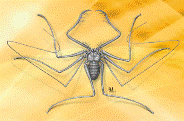Papers in the Biological Sciences
Date of this Version
2010
Abstract
The environment can impose strong limitations on the efficacy of signal transmission. In particular, for vibratory communication, the signaling environment is often extremely heterogeneous at small scales. Nevertheless, natural selection is expected to select for signals well-suited for effective transmission. Here, we test for substrate-dependent signal efficacy in the wolf spider Schizocosa stridulans Stratton 1991. We first explore the transmission characteristics of this important signaling modality by playing recorded substrate-borne signals through three different substrates (leaf litter, pine litter, and red clay) and measuring the propagated signal. We found that the substrate-borne signal of S. stridulans attenuates the least on leaf litter, the substrate upon which the species is naturally found. Next, by assessing mating success with artificially muted and non-muted males across different signaling substrates (leaf litter, pine litter, and sand), we explored the relationship between substrate-borne signaling and signaling substrate for mating success. We found that muted males were unsuccessful in obtaining copulations regardless of substrate, while mating success was dependent on the signaling substrate for non-muted males. For non-muted males, more males copulated on leaf litter than any other substrate. Taken together, these results confirm the importance of substrate- borne signaling in S. stridulans and suggest a match between signal properties and signal efficacy – leaf litter transmits the signal most effectively and males are most successful in obtaining copulations on leaf litter.


Comments
Current Zoology 56 (3): 370−378, 2010
Used by permission.
http://www.actazool.org/